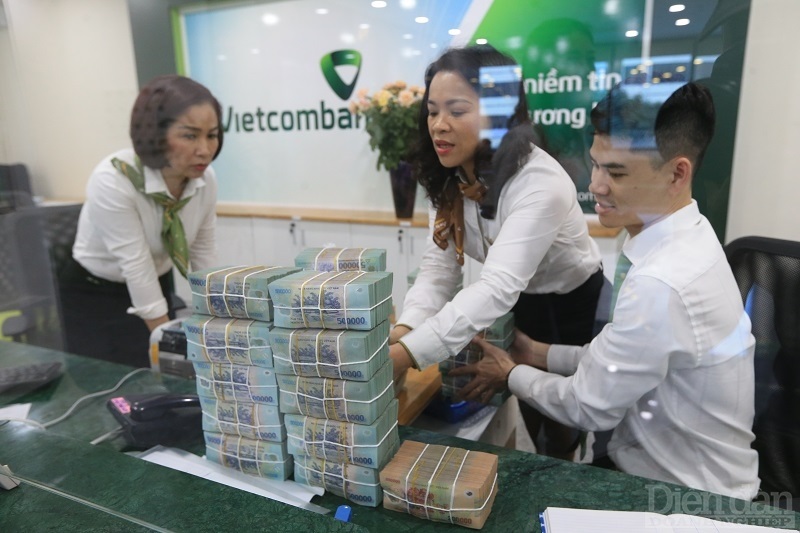Solution to boost cash flow into the economy
Many firms are presently battling financial shortages and are forced to sell off their remaining assets in order to continue operating. According to Mr. Pham Xuan Hoa, former Deputy Head of the Strategy Institute at the State Bank of Vietnam, if money is pumped into the economy, aggregate demand would rise, stimulating growth.

Credit injected into the economy reached around 3.07% as of April 25, 2023, capital mobilization topped 2%, while deposits from economic entities (mostly companies) in the banking system, as indicated by M2 money supply, dropped by nearly 6%, equivalent to 300 trillion Vietnamese dong. Businesses must utilize any cash in their accounts to satisfy immediate urgent demands due to a lack of cash flow.
The overall means of payment in the Vietnamese economy expanded by little more than 6% in 2022, while the economy grew by around 8.02%. When combined with a 3.4% inflation rate, M2 should have expanded by 11-12%, but it is now at a historic low of only 5.5%.
According to Mr. Hoe, all of these facts imply that the economy is facing a serious cash crisis, with many enterprises exhausting their cash flow and having to sell off their remaining assets to sustain production and company operations.
Meanwhile, banks have outperformed Basel II requirements, with market-based financing ratios reaching 80%. This implies that banks that wish to lend must seek capital from the market, yet business deposits have dropped by about 60%, and the little rise in individual deposits does not compensate for the business shortage. In truth, banks are failing to achieve Basel II risk management rules.
Due to firms' inability to absorb money and fulfill lending conditions, banks have been forced to purchase treasury bills and government bonds. As a result, the amount of money utilized to acquire government bonds in recent auction days has reached tens of trillions of Vietnamese dong, yet the money is "locked" back into the central bank after the auction.
However, all of this money is not part of the M2 money supply, and banks wrongly feel they have capital to lend when, in fact, they do not, therefore Vietnam's money multiplier is extremely low. Despite the fact that the State Bank of Vietnam has decreased interest rates three times, the economy would still suffer a cash shortage if the money supply does not expand.
Mr. Hoe predicts the State Bank of Vietnam will reduce the deposit interest rate ceiling to less than six months. Individuals who deposit money, on the other hand, will discover ways to attract their capital through incentives and external benefits. As a result, banks have evolved into conduits for the mobilization of cash for the owners of enormous economic conglomerates.
Notably, the majority of capital is concentrated in shadow corporations and flows into real estate, as indicated by the 15.8% increase in real estate indebtedness by the end of 2022. As a result, when the real estate bubble collapses, money cannot flow out, making it difficult for manufacturing and business companies to acquire loans and stifling credit development.
Many industry, commercial, and technological investment projects are unable to acquire finance because the Internal Rate of Return (IRR) does not satisfy bank interest rates. Only real estate or financially speculative firms that take money from later investors to pay off earlier investors are eligible for financing. This crisis may put the banking system in jeopardy.

The "burst" of bad debts in the financial sector in 2011-2012, which took Vietnam ten years to recover from, is a clear lesson. This indicates that if the financial system is in trouble, the economy will suffer as well. Experts believe that, while state-owned commercial banks operate fairly and methodically, many joint-stock commercial banks should reassess their operations.
These banks, in particular, make loans to "shadow" businesses, which pose several threats to the economy. The cross-ownership structure operates as a matrix, raising interest rates in the economy and making it harder for manufacturing, business, and technology development firms to attract capital. To solve these difficulties and save the economy, solutions are required.
Many analysts have noted that Vietnamese firms are still relatively tiny, and allocating resources in a high-risk, high-interest-rate environment is detrimental to the broader economy.
Mr. Hoe proposes two techniques for injecting money and stimulating aggregate demand in the economy. First, investing in public infrastructure projects that pay people, generating demand for building supplies, labor, machinery, and fuel, and establishing a large value chain in the economy.
Second, by targeting foreign currency purchases, the central bank's credit money may be poured into the economy without the funds being repatriated. The money is still in the banking system in this situation. If the funds are obtained from companies, the firms will deposit the funds in banks. If the money is bought from individuals via remittances, the individuals will likewise utilize the local currency to deposit back into banks. This serves to enhance the money supply inside the banking system while also resolving the central bank's lending ratio issue in the market.
As a result, as long as money can enter the market, aggregate demand will rise, stimulating economic expansion.








